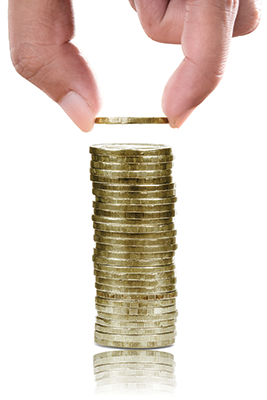Pricing is one of the most powerful ways you can improve your business’ performance. Consider the following:
- An effective pricing policy will keep you profitable and successful.
- A mediocre pricing policy will keep you frustrated and barely in business, wondering what needs to be done to succeed.
- An ineffective pricing policy will put you out of business.
Staying successful by employing an effective pricing policy means increasing profit, beating the competition and creating wealth. Price increases or decreases have a magnification effect on profit. The reason is simple: Price increases usually reach the bottom line in one piece, whereas the advantages of lower unit costs or higher sales are diluted.
Once breakeven is achieved, price increases are extremely powerful and have a significant effect on the bottom line. Thus, for a company with 10 percent net margin, a 10 percent price increase could produce a 100 percent increase of profit to 20 percent. This works the other way as well: A 10 percent decrease of price decreases profit 100 percent, taking a 10 percent net margin to zero, or breakeven.
Case in point
Let’s look at an example. If revenue plus cost structure per hour is:
Direct labor: $17
Chemicals:$6
Vehicle: $8
Other direct costs: $4
Selling & advertising: $10
General & administrative: $18
Total cost: $63
Sales: $70
Profit: $7
If we change the sales price to $77, we doubled the profit by 100 percent to $14 because there are no additional costs associated with providing this service.
This is a double-edged sword, however, because reducing your price by $3.50 will cut your profit by half. A price reduction of $7 will wipe out your entire profit. Be careful when doing this analysis, because you need to know how price changes will affect your bottom line.
A six-step process
Pricing should be analyzed at least annually to consider a revision. Here is how we figure price increases:
- Analyze and adjust your standard hourly billing rate, to ensure that your hourly cost and profit objectives are being met.
- Review your estimated time to complete a job — including time to retreat — to determine whether your estimated time to complete a particular job is accurate.
- View your standard pricing for new work and your customer service records, to determine the amount of time spent servicing each customer — and the amount of money that each customer was billed for the year.
- Divide the total amount of money billed by the number of hours of worked to determine the dollars per hour on each account.
- Once the dollar per hour has been determined for each customer and each job type, compare that dollar per hour to the standard hourly billing rate.
- If necessary, increase the price to bring the dollar per hour in line with the standard billing rate per hour.
Once you determine the price increase amount, the most important step is selling the price increase to your customers by showing the value of your service.

Leave A Comment